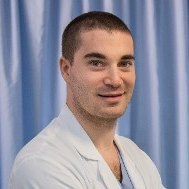Trends and Novelties in Cardiovascular Imaging
A special issue of Diagnostics (ISSN 2075-4418). This special issue belongs to the section "Medical Imaging and Theranostics".
Deadline for manuscript submissions: closed (30 November 2021) | Viewed by 36893
Special Issue Editors
Interests: heart failure; atrial fibrillation; echocardiography; hypertension; heart; cardiology; transesophageal echocardiography; cardiovascular system; cardiac function; electrocardiographyh
Special Issues, Collections and Topics in MDPI journals
Special Issue Information
Dear Colleagues,
Cardiovascular diseases represent the major causes of mortality and morbidity both for men and women in developed countries, with ischaemic heart disease and non-ischaemic cardiomyopathies playing the most relevant role.
As several inherited and acquired processes have been recognized as the causes of myocardial dysfunction, potentially leading to heart decompensation, life-threatening arrhythmias and eventually death, prompt detection of myocardial structural and functional abnormalities is considered a crucial step in taking care of such subjects.
The ultimate role of cardiovascular imaging in managing cardiovascular diseases has been highlighted, not only from a diagnostic perspective, but also for prognostic purposes.
Many imaging techniques, whether non-invasive (echocardiography, cardiac computed tomography, cardiac magnetic resonance, single-photon emission computed tomography, positron emission tomography) or invasive (angiography, intravascular ultrasound, optical coherence tomography) could be used alone, in sequential approach or even with merged images, to correctly assess patients with cardiac diseases, and recent technical development has further extended the application of such technics in many clinical scenarios.
This Special Issue of Diagnostics aims to present the role of non-invasive and invasive imaging modalities in the diagnosis and management of cardiovascular diseases, with a particular attention not only to what nowadays represents the standard of care, but mostly to novelties that could represent relevant achievements for the next future.
Dr. Andrea Baggiano
Prof. Matteo Cameli
Guest Editors
Manuscript Submission Information
Manuscripts should be submitted online at www.mdpi.com by registering and logging in to this website. Once you are registered, click here to go to the submission form. Manuscripts can be submitted until the deadline. All submissions that pass pre-check are peer-reviewed. Accepted papers will be published continuously in the journal (as soon as accepted) and will be listed together on the special issue website. Research articles, review articles as well as short communications are invited. For planned papers, a title and short abstract (about 100 words) can be sent to the Editorial Office for announcement on this website.
Submitted manuscripts should not have been published previously, nor be under consideration for publication elsewhere (except conference proceedings papers). All manuscripts are thoroughly refereed through a single-blind peer-review process. A guide for authors and other relevant information for submission of manuscripts is available on the Instructions for Authors page. Diagnostics is an international peer-reviewed open access semimonthly journal published by MDPI.
Please visit the Instructions for Authors page before submitting a manuscript. The Article Processing Charge (APC) for publication in this open access journal is 2600 CHF (Swiss Francs). Submitted papers should be well formatted and use good English. Authors may use MDPI's English editing service prior to publication or during author revisions.
Keywords
- Ischaemic cardiomyopathy
- Non-ischaemic cardiomyopathy
- Echocardiography
- Cardiovascular Magnetic Resonance (CMR)
- Cardiac Computed Tomography (CCT)
- Single-photon emission computed tomography (SPECT)
- Positron emission tomography (PET)
- Angiography
- Intravascular ultrasound (IVUS)
- Optical coherence tomography (OCT)
Benefits of Publishing in a Special Issue
- Ease of navigation: Grouping papers by topic helps scholars navigate broad scope journals more efficiently.
- Greater discoverability: Special Issues support the reach and impact of scientific research. Articles in Special Issues are more discoverable and cited more frequently.
- Expansion of research network: Special Issues facilitate connections among authors, fostering scientific collaborations.
- External promotion: Articles in Special Issues are often promoted through the journal's social media, increasing their visibility.
- e-Book format: Special Issues with more than 10 articles can be published as dedicated e-books, ensuring wide and rapid dissemination.
Further information on MDPI's Special Issue polices can be found here.







